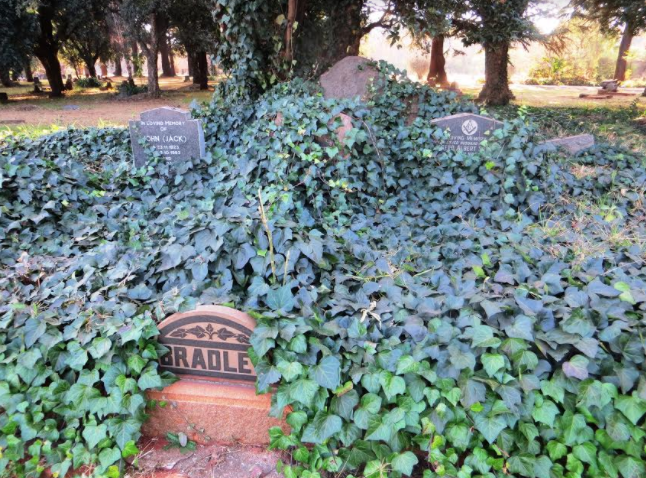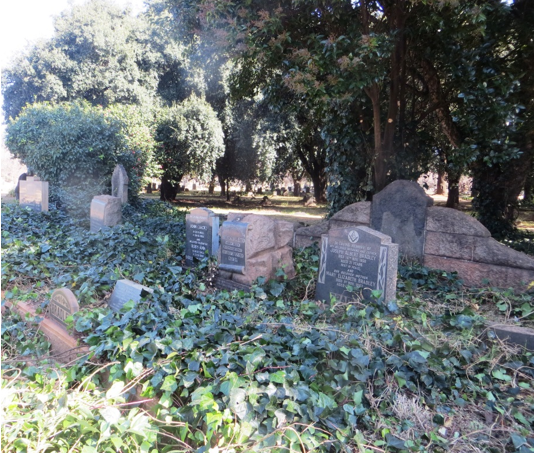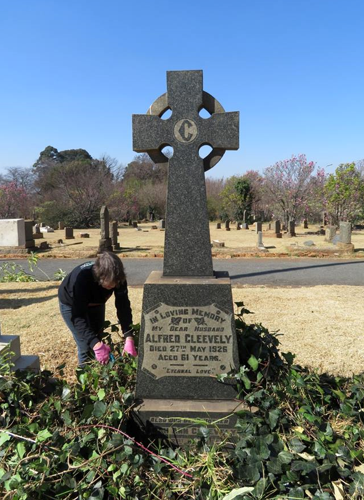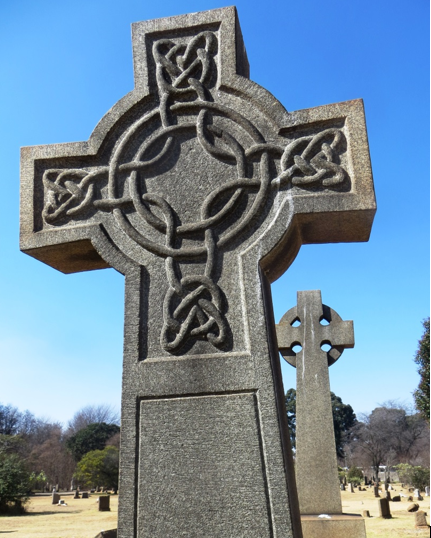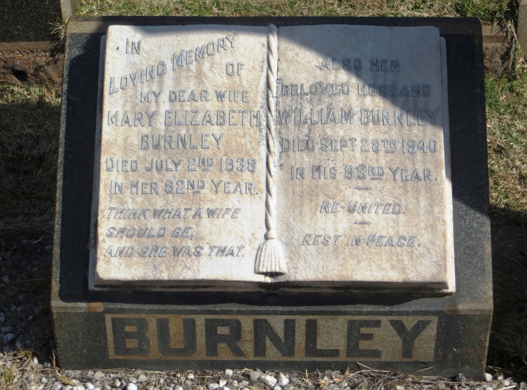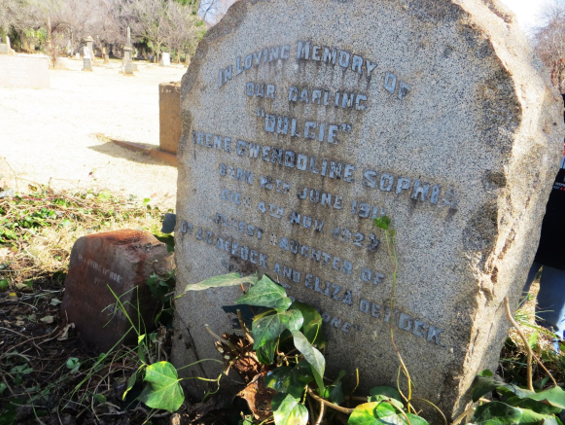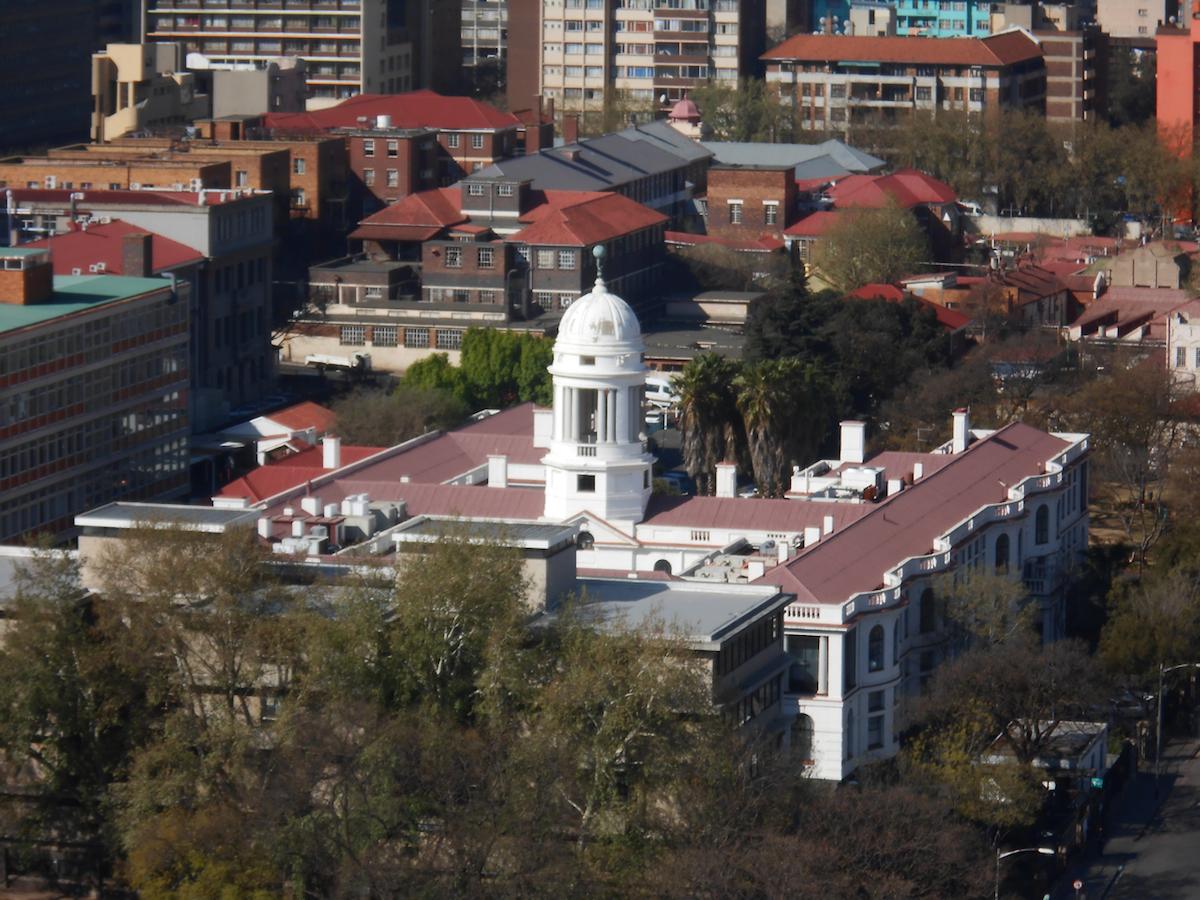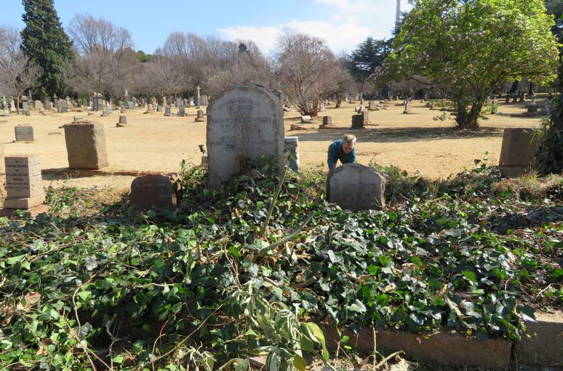
As its contribution to 67 Minutes for Mandela Day, the Johannesburg Heritage Foundation team led by Flo Bird tackled the mess at Brixton cemetery. The task at hand was to cut back ivy and overgrowth around tombstones and graves and to clear family plots and collect hidden litter. We were a group of about 12 who set to work with secateurs, black plastic bags and muscle power. We found City Parks contractors also busy in the cemetery, cutting back and removing dead branches. Brixton cemetery is looking better. What nicer way to remember Madiba, make a small difference, enjoy the quiet of this historic cemetery and soak up some winter sun. Here is a heritage initiative with a purpose.
Flo commented on the JHF website: “Two and a quarter hours very well spent uncovering graves we hadn't known were hiding under the ivy. We had to do 67 minutes x 2 to make any difference. Wonderful to see a contractor had already chopped down masses of robinea and Sir Frederick Spencer Lister's grave is visible once more."
The De Kocks, Cleevelys, Listers, Bradley, Teague and Tomlinson families all have tombstones which returned to visibility and were given a bit of TLC. Brixton is an oasis of tranquillity and filled with history, the clues and cues to Johannesburg’s past are all on the tombstones.
A “before picture” of ivy taking over - two weeks ago (Kathy Munro)
The ”after” picture of the same set of graves at Brixton (Kathy Munro)
Internet research shows that Alfred Joseph Cleevely was born in Monmouthshire Wales in the United Kingdom and died in Johannesburg in 1926. The substantial tombstone in the design of a cross was erected by his wife, Sarah Anne Slade who only died in 1940.
Tombstone of Alfred Joseph Cleevely (Kathy Munro)
They were immigrants to South Africa probably during the 1890s. They had one son, Albert Trevor Cleevely, who died in 1934, and whose ashes are in Brixton cemetery wall, but he in turn had a son born in 1916, Alfred Trevor. This tombstone is in the form of a Welsh Celtic cross, with a circular nimbus connecting the arms of the cross; it is a symbol of Christianity, as well as Welsh cultural origins. There are many Celtic crosses to be seen in Brixton cemetery.
Another example of a stone Celtic cross, a combination of an intricate but simple and effective design. Tombstone of Carrie Maud Marshall (Kathy Munro)
I rather liked this headstone – the Burnley Couple, Mary Elizabeth died in her 82nd year and her husband William died in his 83rd year. The epitaph “Think what a wife should be and she was that” suggests an entirely satisfactory and long marriage.
Ivy is normally associated with old buildings and it is regarded as a good covering for old walls and brickwork. But ivy is also a thick flourishing evergreen, creeping, spreading plant with persistent vine like tendrils that knots and thickens in nodes. It will grow in the harshest of environments. Ivy is not a parasite but is rooted in the ground and will creep. One plant will entwine itself with another. My grandson as we worked asked the question: why is ivy planted on graves? The symbolism and ancient mythology of ivy is makes it the obvious choice for ground cover in a cemetery; ivy symbolises wedded love, fidelity, friendship and immortality, it is a plant associated with the Greek gods.
The hidden but now revealed headstone of Dulcie De Kock (Irene Gwendoline Sophia) who died aged 12 in 1923, mourned by her parents (Kathy Munro)
Footnote – Who was Sir Frederick Spencer Lister? He was an English-born South African doctor and bacteriologist (dates 8 April 1876 – 6 September 1939) who emigrated to the Transvaal after qualifying in London. He served as medical officer to the Premier Diamond Mines from 1907 to 1912 and to the Rand Gold Mines, 1912 to 1917. In 1917 he was appointed Research Bacteriologist at the South African Institute for Medical Research in Johannesburg. He later became Director of the Institute and Professor of Pathology and Bacteriology at the University of the Witwatersrand.
Kathy Munro
South African Institute of Medical Research Building (The Heritage Portal)
Disclaimer: Any views expressed by individuals and organisations are their own and do not in any way represent the views of The Heritage Portal.

